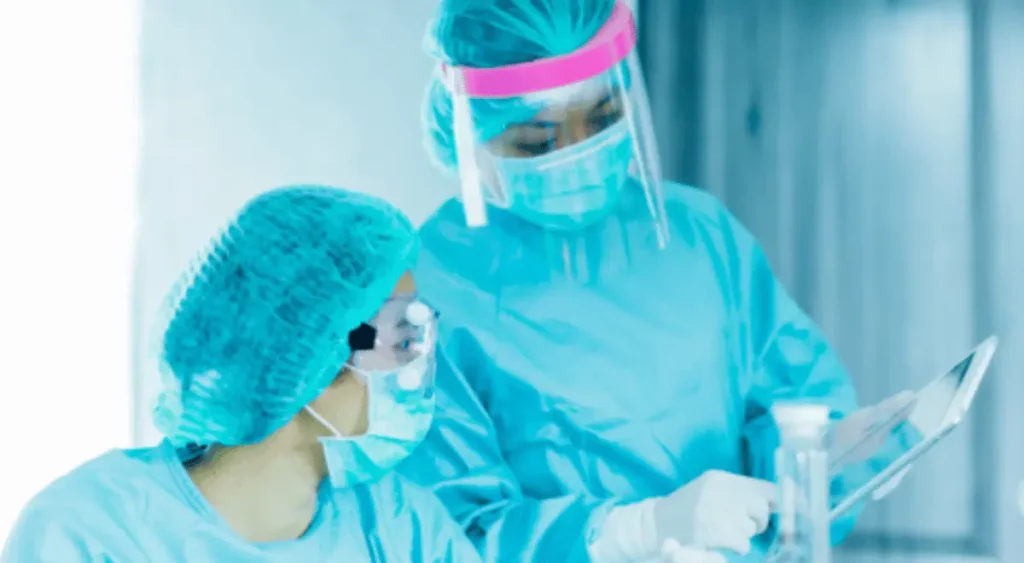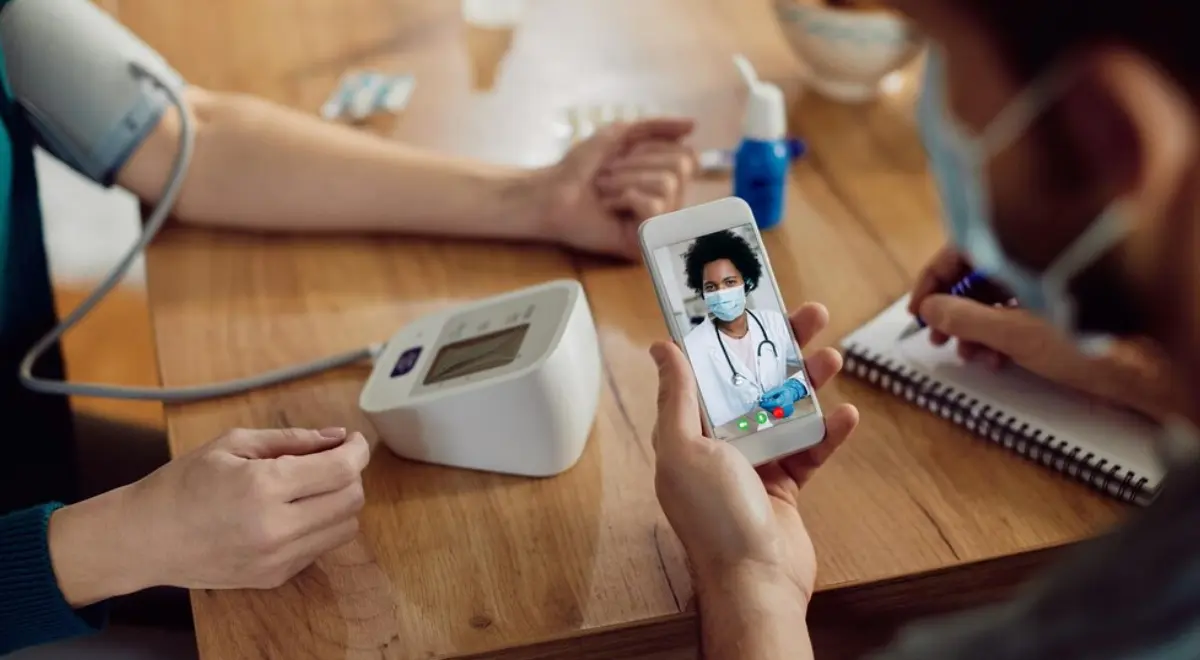How Can Remote Care Limit Patient Exposure To Covid-19?

How Remote Patient Monitoring Can Limit Patients Exposure Risk to COVID-19
Coronavirus has affected the lives of people across the world. The pandemic has left people exposed to the danger of getting infected with the disease.
Thousands of people have already lost their lives and the number is increasing day by day. The worst part is that even the frontline warriors like our healthcare workers are falling prey to the virus.
The number of positive cases is now putting extreme pressure on the capacity of the health infrastructure of the USA to admit patients, resulting in chaos.

For example, in the capital city of the USA, which is now the hub of coronavirus infected patients, had been put as an example of a model healthcare system in the country, just to be later shattered by the advent of the pandemic.
The virus has made all the impressiveness of the health infrastructure void, which is obviously not because of the government’s policies but the outdated system prevailing in the sector.
As of now, i.e; the third week of May, the number of confirmed COVID-19 cases in New York stands out over 387 thousand. To note, the number is much more than the total cases in China, the UK, and many major countries.
In this case, the country must move forward with a value-based approach in order to provide better care to the people and do proper health management.
The introduction of the remote patient monitoring system (RPM) has proved itself to be one of the most useful clinical assistance, thanks to the high pace, better efficiency, and great affordability.
When people are diagnosed with coronavirus, isolating the patient becomes elementary so as to contain further spread of the infection.
During this time, the affected individuals are often exposed to various sorts of complications and need support to overcome their deteriorating health. Not only this but isolating COVID-19 patients is also imperative to save other patients as well as healthy individuals from getting infected.
There comes the need for Remote Patient Monitoring that works to support these patients in need.
Also Read: Remote patient monitoring CPT codes
What Is Remote Patient Monitoring And How It Work?
In simplest terms, RPM is a system of collecting health-related information and statistics of patients using several technologies and sending the data to a healthcare professional for assessment and suggestions.
RPM can be considered as the best option during the present crisis where the graph of COVID-19 cases is showing no trend to flatten in the coming days.
The remote patient monitoring system allows healthcare professionals to receive important data of the patients who are being monitored remotely. During the process, the patient is also able to keep constant communication with the physician.
The RPM system involves-
- The upper and lower limit of the vital metrics such as blood pressure, body temperature, body glucose level, pulse, and oxygen saturation, set by the physicians for a specific patient.
- With the help of these metrics, the abnormalities of the patient are monitored and important readings of the patient’s health are recorded.
- In case of extreme illness, the vital sign, generally the lower or upper range is crossed in the metrics, creating an alert.
- This alert reaches the physician in the form of an SMS or any other means.
How RPM Limits Exposure Risk to COVID-19
The technology employed in an RPM system makes it a robust tool by default to decrease/limit a patient’s exposure risk to COVID-19.
- As generally advised, the first and foremost precaution to check the spread of the virus is to maintain a social distance of at least two meters. However, since most hospitals and a major section of the healthcare workers are deployed to fight the patients suffering from coronavirus, it is becoming extremely difficult for other patients to get themselves diagnosed and treated.
- The RPM system is probably the only way by which patients suffering from any other disease or illness can be monitored and cared for without exposing themselves to the risk-full environment of hospitals.
- In cases of mild illness, the RPM system allows the patient to get advice and recommendations without even physically visiting any doctor. The health-related data is sent electronically to the experts and they can suggest medicines or any treatment as deemed necessary to the patient. The patient, in turn, can simply follow the suggestions and recover easily.
- For diseases that require continuous monitoring, the RPM system can play a decisive role in two ways. First, it allows the healthcare professional to monitor the patient’s health continuously by providing information frequently. This solves the problem of the risk exposure that any patient can face if he/she needs to be admitted to a healthcare unit in which COVID-19 patients are also being treated.
- In cases where immediate attention is required, the RPM system notifies the caretaker or the doctor immediately by sending an SMS automatically. This real-time response mechanism is the most viable alternative upon which the concerned doctor can rely completely.
Comprehensive Benefits
The technology of the remote patient monitoring software has been in operation for several years now and with the latest improvement in the system, better vigilance can be expected.
The patients are now able to send instant and precise vitals to the physicians to be monitored efficiently. Moreover, with the amazing build of the HealthArc RPM system, one can afford better engagement and easier chronic care management.
The state-of-the-art algorithm provides precise data and allows physicians to read, analyze, and identify issues more accurately in real-time.

In addition to the system, HealthArc also provides advanced communication tools that make it easy for both the patient and doctor.
The remote patient monitoring system can also provide great assistance during the present development of COVID-19. The benefits of the RPM can be summed up as follows-
Better defined access
Amidst the chaos created by the rampant spread of the disease, it has become extremely difficult for patients to access caregivers.
However, with the advent of the Remote Patient Monitoring System, the capacity of doctors has increased multifold as they are now able to look after multiple numbers of patients simultaneously. Moreover, comprehensive research conducted in the USA suggests that the RPM market is expected to grow at a CAGR of 17.0% to reach $2,130 million by the year 2022. This shows how the healthcare sector in developing countries is readily welcoming advanced RPM systems owing both to the benefits it brings for the patient as well as for the economy of the sector.
Saves effort
Science and technology are making the lives of human beings easier and comfortable ever since their establishment.
Remote Patient Monitoring is no less that serves as a boon to healthcare organizations. The best advantage of the software is that it opens the door for physicians to treat more patients at a time, thus saving both time and effort. This makes it the best-suited equipment for every health working professional now.
Uninterrupted care
With the increasing number of victims of the virus with every passing day, it is becoming difficult for the medical care units to look after every patient constantly.
The present development demands continuous watch but due to the conventional healthcare processes, the system’s ability is falling short substantially to deal with the pressure, even though the doctors are putting their day and night to fight the disease as much as possible. In such scenarios, the only technology that may enhance the healthcare service is RPM.
Better assurance
Assurance in the field of medication is one of the most important factors. How a patient is doing during the treatment can be finalized if the result is prospective.
But for a successful result, one would need constant watch. HealthArc is one such provider of RPM that promises 100% assurance of the software’s efficiency.
HealthArc has found one of the easiest solutions for the entire procedure. The devices it uses in the system include wireless blood pressure cuffs, weighing scales, blood glucose meter, pulse oximeter, etc.

With the help of such equipment, the patient can check his/her own vitals at home while the health professionals use fully HIPAA compliant regulations to access the data securely. These data are automatically analyzed. It technically allows unlimited numbers of patients to be monitored simultaneously.
Elaborating the functions through which the remote patient monitoring software secures communication-
- Collecting information: The patient’s monitoring system is set by the user. Once the system is activated, information of the patient is collected and stored in the internal systems.
- Information transmission: The collected data is then transmitted to the physician via text or other mediums.
- Information evaluation: The professionals examine the data displayed by the internal algorithmic software to check the area of concern.
- Instant notification: After a complete examination, if there is any sort of indication that requires attention, alerts are sent to the designated team and the emergency responder.
- Real-time Action: The patient is accompanied by an emergency team of medical assistance that deals with the complications generated and deploy preventive measures.
The numbers also speak in the favor of RPM systems. A study conducted last year forecasts that the RPM market is likely to grow at an increasing rate. The introduction of 5G technologies is going to bolster the entire RPM infrastructure, particularly the communication between patients and doctors. This compels us to believe in the future of RPM technologies and with companies like HealthArc striving continuously to offer robust RPM solutions, the final results will be much more than what is expected.
Designed for every group of medical assistance, the RPM system guarantees efficiency, saves time, and offers satisfactory outcomes. The convenience of the system allows patients to get clinical assistance immediately even if he/she is living remotely from the doctor.
Schedule a demo today to learn more about billing and reimbursement principal care management CMS CPT codes.
Most recent blogs
Categories
- Advanced Primary Care Management
- Behavioral Health Integration
- Cellular Remote Patient Monitoring
- Chronic Care Management
- Chronic Care Management Billing
- Chronic Care Management CPT Codes
- Chronic Care Management Program
- Chronic Care Management Software
- Digital Health Platform
- Principal Care Management
- Principal Care Management CPT Codes
- Remote Care Programs
- Remote Monitoring Devices
- Remote Patient Care
- Remote Patient Monitoring
- Remote Patient Monitoring Billing
- Remote Patient Monitoring CPT Codes
- Remote Patient Monitoring Devices
- Remote Patient Software
- Remote Therapeutic Monitoring
- Remote Therapeutic Monitoring Billing
- Remote Therapeutic Monitoring CPT Codes
- Telemedicine & RPM
- Transitional Care Management
- Transitional Care Management Billing
- Transitional Care Management CPT Codes
Related Posts
- February 21, 2025 | Read Time: 5 mins
RPM’s Role in Identifying Early Symptoms of Chronic Conditions for Prevention
- February 14, 2025 | Read Time: 4 mins
Monitoring Post-Surgical Recovery With RPM Systems
- February 10, 2025 | Read Time: 5 mins






